Montenegro / Crna Gora – Let’s explore here
What’s it like in Montenegro?
Montenegro is an incredibly mountainous and beautiful country in the Balkans in southern Europe. It’s about the size of Northern Ireland. The mountains include some of the most rugged terrain in Europe, averaging more than 6,500 ft (1,981 m) in height. The highest point is Bobotov Kuk, in the Durmitor mountain range, at 8,278 ft (2,523 m) above sea level.
There are several, large national parks in Montenegro, and when travelling though the country it’s easy to see why … the scenery is spectacular! The Biogradska Gora area is one of the UNESCO World Network of Biosphere Reserves, and contains the last of the European rainforest.
The country has a fairly small population of around 625,000 people (2023), about a third of whom live in the spaciously laid-out capital, Podgorica.

A bit about the history of Montenegro
Early History and Formation
Montenegro’s history dates back to ancient times, with early settlers including Illyrians and Greeks. The area was later influenced by the Roman Empire, followed by the Byzantine Empire. In the Middle Ages, the region became home to several Slavic tribes, and the first principality of Montenegro emerged around the 9th century. The state of Duklja (later known as Zeta) played an important role in early medieval Montenegro.
Ottoman Influence and Independence Movements
In the 15th century, Montenegro came under Ottoman control. Despite this, the region retained its independence through a combination of resistance and strategic alliances, particularly with Venice. Over the centuries, Montenegrins developed a strong sense of national identity and maintained a degree of autonomy, particularly in the mountainous regions, where the people resisted Ottoman authority.
The Rise of the Petrović-Njegoš Dynasty
In the 17th century, the Petrović-Njegoš family rose to power and led Montenegro. Under the leadership of Peter II Petrović-Njegoš, Montenegro established itself as a principality in the 19th century. Peter II became famous for his efforts to unite the people of Montenegro against external threats, particularly the Ottomans, and for his significant contributions to Montenegrin culture and literature.
Montenegro’s Role in the Balkan Wars and World War I
Montenegro fought in the Balkan Wars (1912-1913) alongside Serbia and other Balkan states to expel the Ottoman Empire from the region. In 1912, Montenegro gained territory, including parts of Albania, though it faced political challenges. During World War I, Montenegro sided with the Allies but was invaded by Austro–Hungarian forces in 1916. After the war, Montenegro was merged with the Kingdom of Serbia to form the Kingdom of Serbs, Croats and Slovenes (later Yugoslavia).
World War II and Socialist Yugoslavia
During World War II, Montenegro was occupied by Axis forces, and resistance movements emerged, particularly from communist partisans. After the war, Montenegro became one of the republics of Socialist Yugoslavia, governed by the communist regime of Josip Broz Tito. During this period, Montenegro experienced significant political and economic changes, along with Yugoslavia’s complex ethnic and political dynamics.
Independence and Modern Montenegro
As Yugoslavia began to break up in the 1990s, Montenegro initially remained in a federation with Serbia. In 2006, following a referendum, Montenegro declared its independence, becoming a sovereign nation after centuries of political union with other states. Since gaining independence, Montenegro has pursued integration with European institutions, joining NATO in 2017 and continuing negotiations to join the European Union.
Today, Montenegro is a small but rapidly developing country known for its stunning Adriatic coastline, tourism, and growing economy. It maintains a strong sense of national identity and has worked to establish itself as an independent state on the European stage.


Montenegro road trip
Our Montenegrin road trip was part of a much larger European road trip.
North west Montenegro
For our Montenegro road trip we travelled from Bosnia & Herzegovina across the hair-raising Mratinje Bridge, following the beautiful Piva Canyon. This route really must be one of the most spectacular there is for entering a country, it’s amazing. The views are superb all the way along the canyon, and as you pass through the rock hewn tunnels you’re constantly dazzled by its beauty.
Another world
From the canyon comes the equally stunning Durmitor national park, which even on a misty day will blow you away. It’s literally like being on another planet, incredible views are all around, including the spectacular Sedlo pass.
North east Montenegro
Over in the north east of the country lies the UNESCO reserve, Biogradska Gora national park, which is superb for hiking in the hills and mountains, or just taking a lovely stroll around the lake.
The capital
In the east of the country lies the capital, Podgorica, which is well worth a visit. It has a very different vibe to many other capitals that we’ve been to, and there’s loads going on.
The coast
We then spent time on the lovely mediterranean coast around the Budva area, before finally heading across country onto Albania.
We learned absolutely masses about this intriguing and beautiful country, and its relationship and history with all of its neighbours.

This is the route that we took through Montenegro on our travels, from Bosnia and Herzegovina to Albania.
Mratinje Bridge – Piva Canyon – Plužine – Katun – Durmitor – Sedlo Pass – Šavnik – Kolasin – Drijenak – Biogradska gora – Podgorica – Budva – Becici
Our favourite places in Montenegro
These are some of the best places that we explored on our road trip through Montenegro. We’ve put them in alphabetical order.
Biogradska Gora
Biogradska Gora is a national park in Montenegro and is also one of the UNESCO World Network of Biosphere Reserves. Rainfall is extremely high in the area, averaging up to 100 inches (2.54m) per year, which allows for the growth of one of Europe’s last three remaining virgin rainforests. Many of the trees are ancient and some are over five hundred years old. In the very heart of virgin forest is Biogradsko Lake, the largest glacier lake in the park.
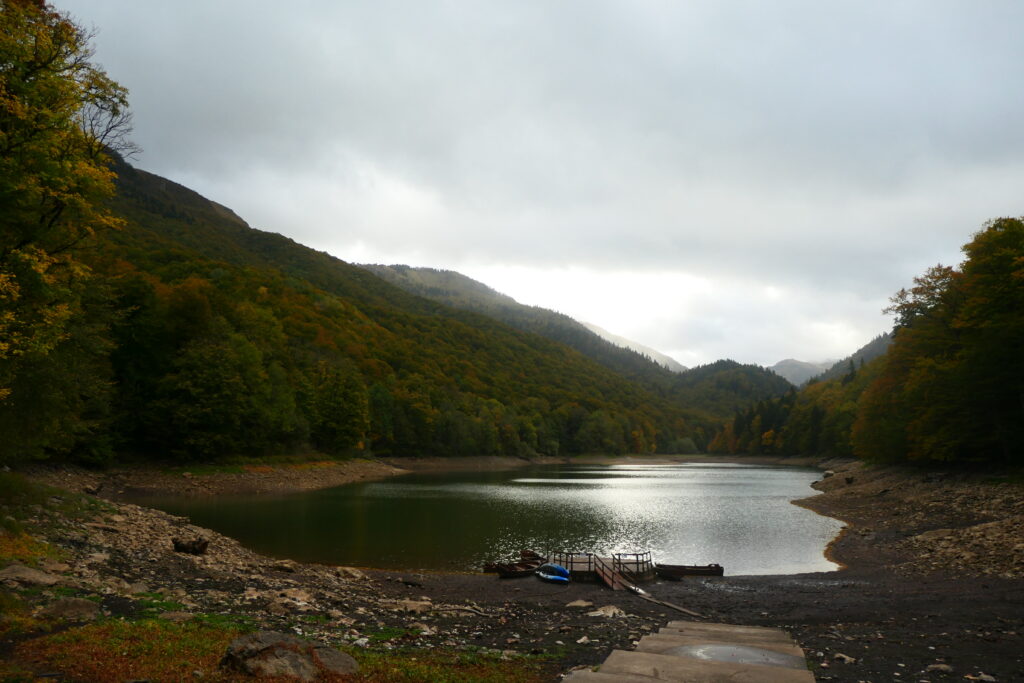



Budva
Budva is a lovely little town on the Montenegro riviera. It’s an ancient town, although nowadays it caters almost completely for tourists visiting the lovely beaches and islands in the area. There are loads of cafés and restaurants, as you would expect.



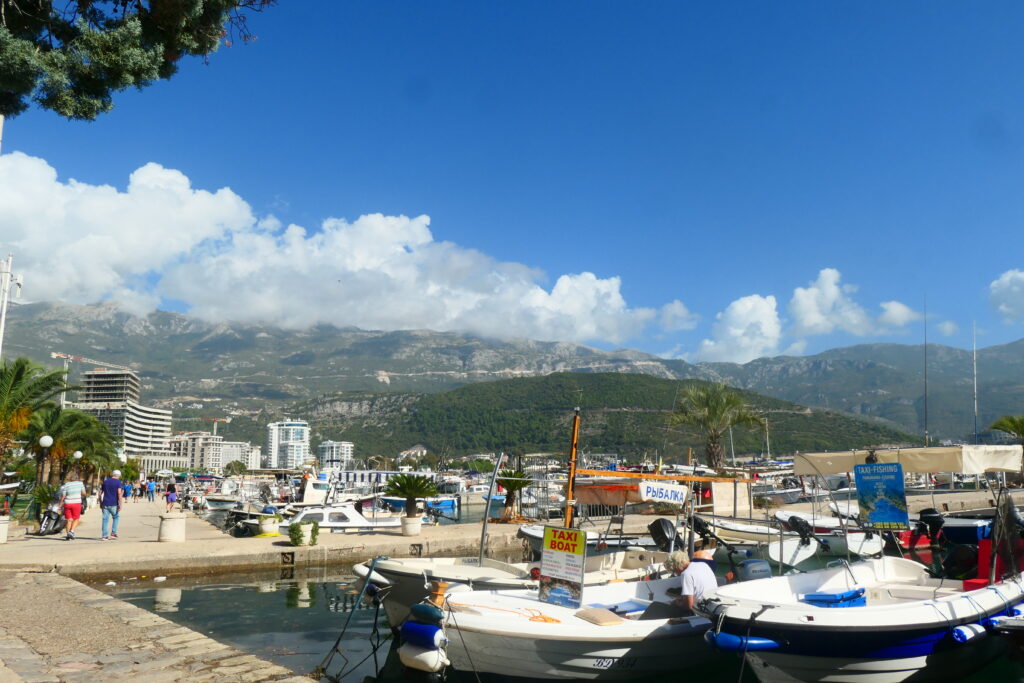

Durmitor national park & Sedlo pass
The Durmitor national park is a set of magnificent mountains in the far north west of Montenegro. The highest point is Bobotov Kuk, at 8,278 ft (2,523 m) above sea level. The Sedlo pass is a fantastic serpentine road that winds its way through the Durmitor national park – it’s also the highest road in Montenegro, 6,256 ft (1,907 m) above sea level.



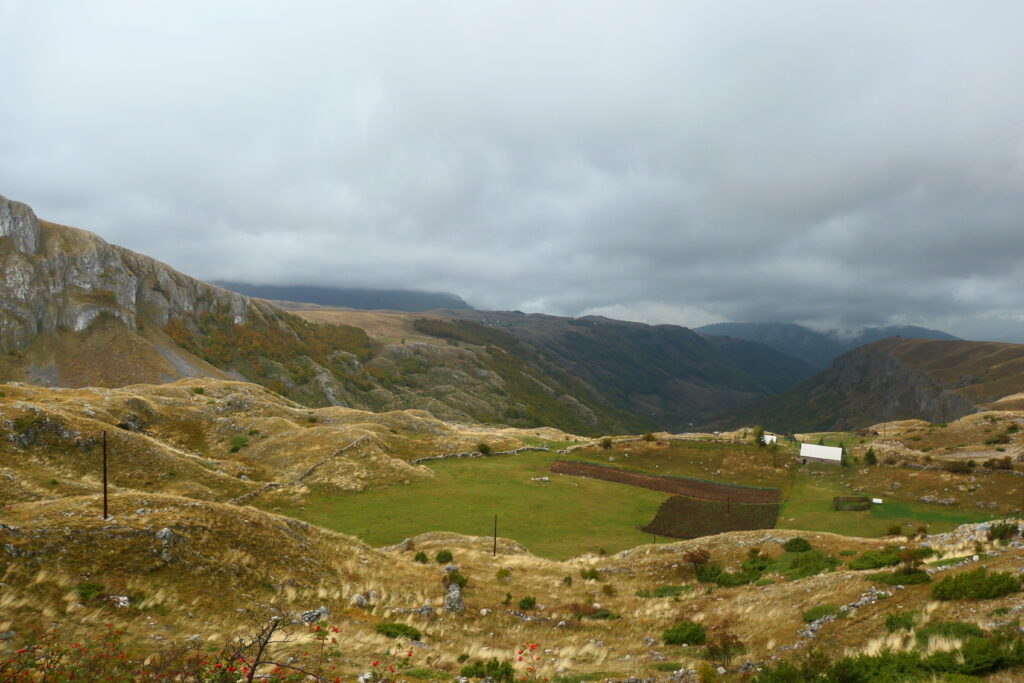
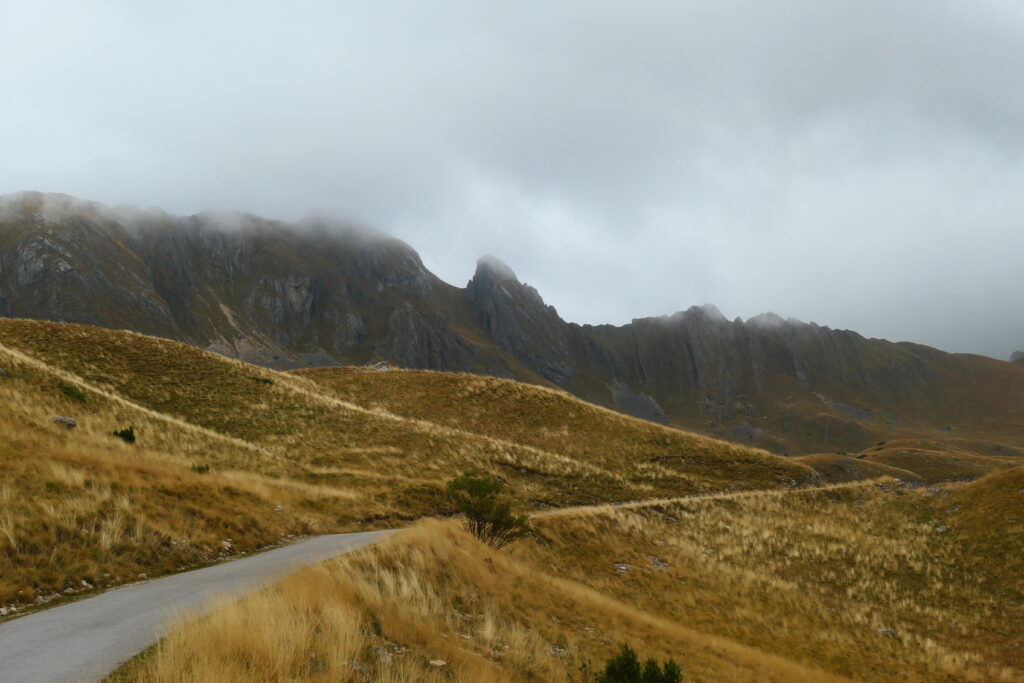




Piva canyon & Mratinje bridge
The Piva canyon is situated between the Bioč, Volujak, Maglić and Pivska planina mountains in Montenegro. It is around 20 miles (33 km) long, and 4,000ft (1,200m) deep.
The Mratinje bridge in in the far north, towards the border with Bosnia & Herzegovina. The bridge looks precarious on approach! The road continues south and passes through over forty tunnels that appear as if they’d been hand cut through the mountains, due to their rough construction.




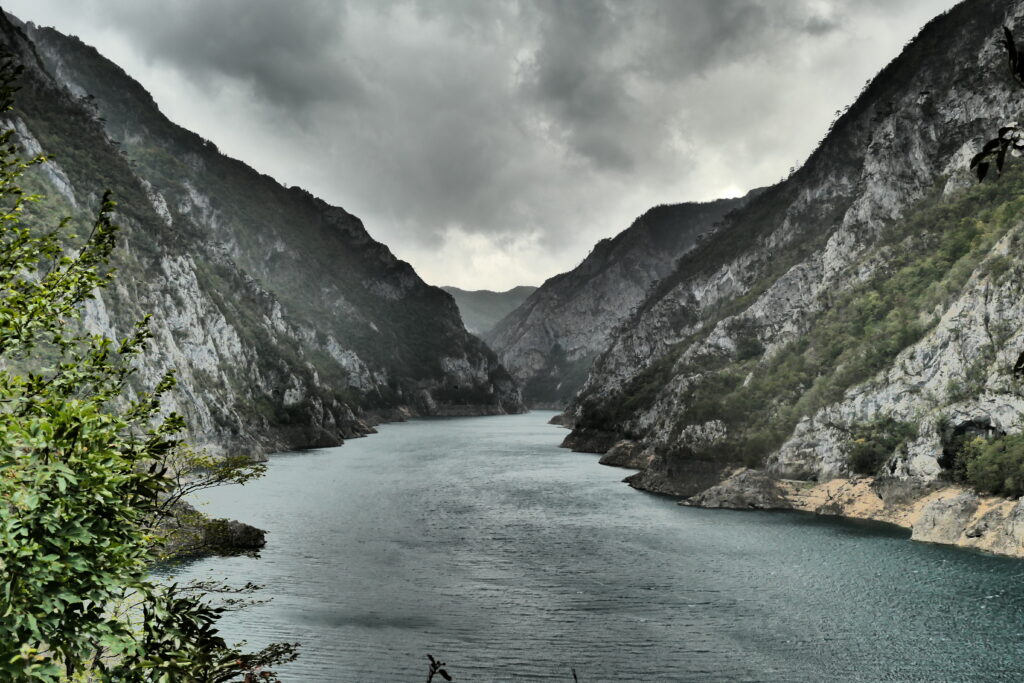
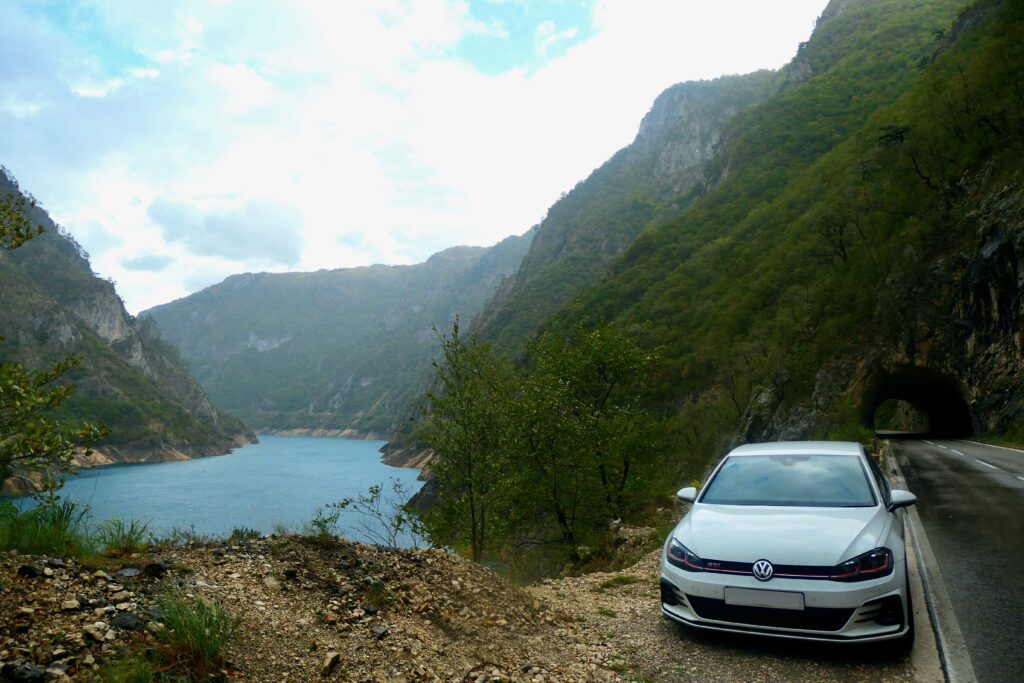


Podgorica
Podgorica is a very ordered and well laid out city in the east of Montenegro. It’s the capital of the country and also its largest city, although only around 180,000 people (2023) live there – that’s just over ¼ of the population. We found it to be very laid back and with many of the roads being so wide, very easy to navigate.


Šavnik
Šavnik is a lovely little town in central Montenegro, completely surrounded by magnificent mountainous scenery.
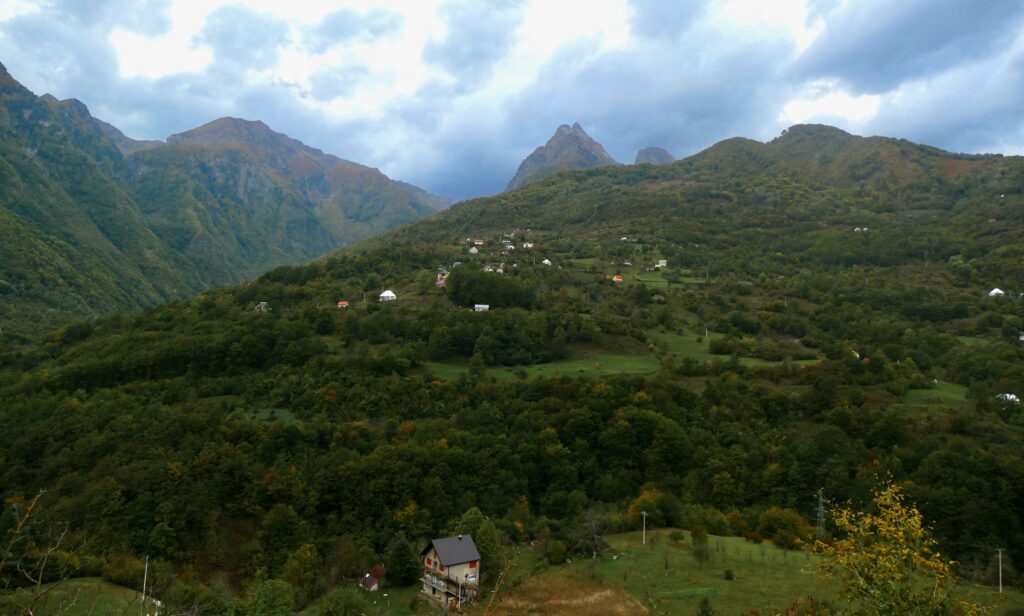

What’s it like to drive in Montenegro?
As with almost everywhere on the continent of Europe, they drive on the right hand side of the road in Montenegro.
Driving in Montenegro is a very laid back affair, presumably because of the paucity of people, but also because of the terrain, which is almost entirely mountainous. The whole country really is like a national park. It’s a very small country, so getting about really doesn’t take much time at all – aside from stopping all the time to take photos!
One thing that is a major hazard are the rockfalls. Unlike most places where road signs indicate these as a possibility, in Montenegro, it’s a major probability. We saw many, many places with large amounts of rockfalls, some of which were huge, as big as cars!
Driving through the border into Montenegro
We entered the country at the Šćepan Polje / Hum border with Bosnia & Herzegovina. In October we were the only people there! The Bosnian side was friendly and efficient. On the Montenegrin side, we literally had to wake the border guard up as he’d fallen asleep!! He too was very friendly, once he’d shaken his head a bit and found his bearings 🤣
Diving in the capital, Podgorica
Driving in the capital, Podgorica is also easy, as the roads are very wide in the main, and follow a grid pattern. So if you do make a wrong turn, just go around the block. People do not tend to drive quickly at all, and there is no harassment that we came across.
Do you require an international driving permit in Montenegro?
We’ve created a dedicated page to driving abroad, which answers this question, and more, which you might find helpful.
Can you use your UK driving license when driving through Montenegro?
We’ve created a dedicated page to driving abroad, which answers this question, and more, which you might find helpful.
Do I need a carnet de passages to drive in Montenegro?
We’ve created a dedicated page to driving abroad, which answers this question, and more, which you might find helpful.
What are the speed limits in Montenegro?
The speed limits for cars in Montenegro are:
- 30 mph (50 km/h) for urban driving
- 50 mph (80 km/h) outside of built up areas
- 50 mph (80 km/h) on dual carriageways
- 60 mph (100 km/h) on motorways
What currency do they use in Montenegro?
In Montenegro they use the Euro. The use of credit / debit cards is now widespread, although not guaranteed – have some cash just in case, particularly in cafés and restaurants and in rural areas. Travellers cheques are accepted in major cities. There are lots of ATMs in city centre, though not elsewhere.
You should make yourself aware of the amount that your bank charges you for using credit and debit cards abroad. Often credit cards are cheaper for purchasing items directly, and for withdrawing cash from ATMs.
What language do they speak in Montenegro?
The official language of Montenegro is Montenegrin, although only about a quarter of people speak the language in reality. Most speak Serbian. Croatian, Bosnian and Albanian are also spoken in some areas.
What time zone is Montenegro in?
Remember, when you’re planning your next trip to take a look at what time zone it’s in.
Do I need a visa to visit Montenegro?
We’ve created a dedicated, more comprehensive page on visas, which you should find helpful. Check it out!
Is wild camping legal in Montenegro?
No, wild camping is illegal in Montenegro, although it is well tolerated.
What plug / socket type do they use in Montenegro?

In Montenegro they use plug / socket type F.
Health issues in Montenegro
Is it safe to drink water in Montenegro?
No, it is not safe to drink tap water in Montenegro. Bottled water is readily available across the country.
What vaccinations are required for Montenegro?
This NHS website is kept up to date with all relevant information on vaccinations in Montenegro.
Phones in Montenegro
What is the country calling code for Montenegro?
The country calling code for Montenegro is +382
What are the emergency phone numbers in Montenegro?
- The emergency number for police in Montenegro is: 112 / 122
- In Montenegro, the emergency number for ambulance is: 112 / 124
- The emergency number for fire in Montenegro is: 112 / 123
Montenegro sim card
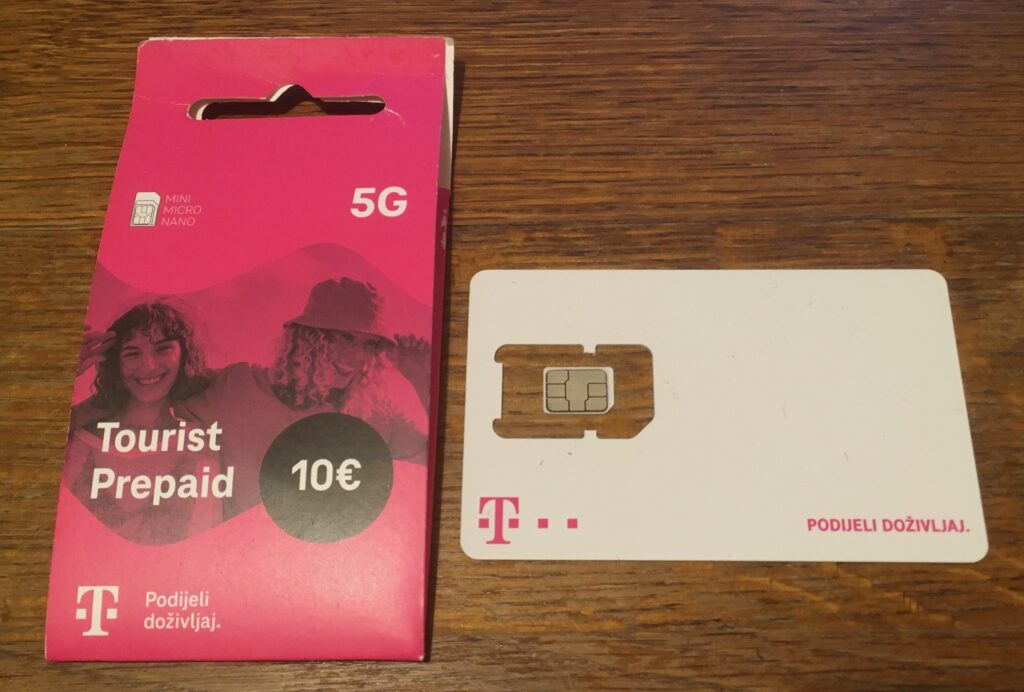
We bought a Crnogorski Telekom Sim card at the first petrol station we came to in Plužine. The man in the fuel station was super helpful 🙂
We paid €10 (£8.50) for a 7 day pre-paid card [500GB]. The Sim card only worked in Montenegro.
If you’ve got some useful info that you’d like to share, let us know!
And don’t forget to check out all the other pictures!
